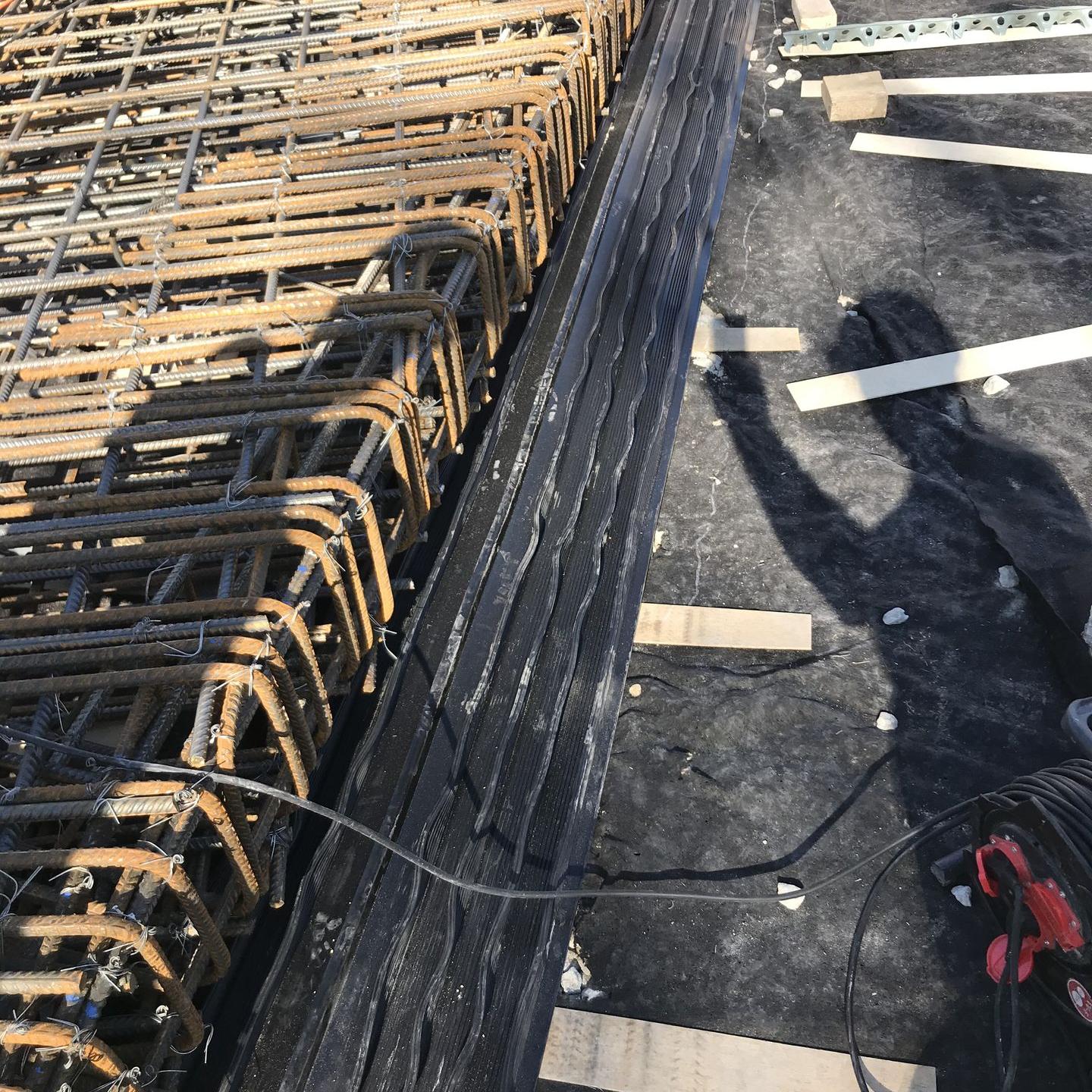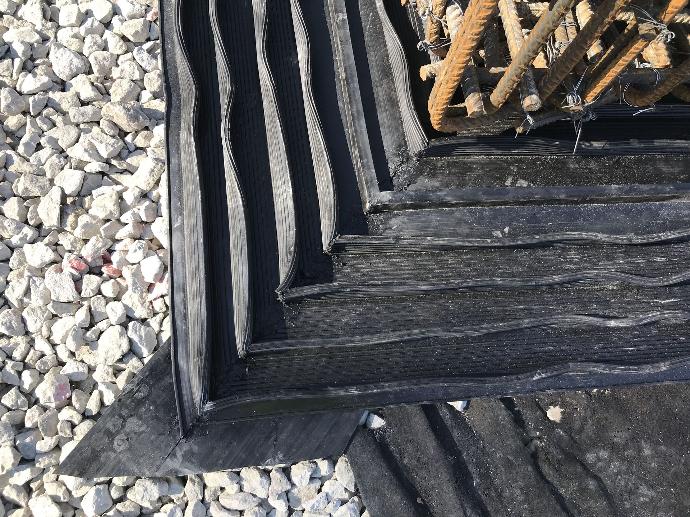These are the 6 biggest mistakes we see when planning and installing PVC expansion joint tapes to below-grade concrete structures.
Structural mistakes:
- Not using a complete system, but a 1- or 2-tape system.
- Installing it only to the wall that reaches the surface of the floor slab.
- Not distinguishing between the construction joint and expansion joint.
Construction mistakes:
- PVC expansion joint tape is installed in sub-zero temperatures.
- Expansion joint tapes are stored incorrectly, e.g., held outdoors in the snow on top of each other during winter.
- Before concrete casting, expansion joints are not cleaned of ice, sand, snow, etc.
These mistakes reduce the expansion joint's water tightness and the joint's effectiveness.
All PVC expansion joint tape turning and connection points must be formed by hot air welding.

Make sure that the PVC expansion joint tape does not contact the reinforcement and is fixed to a flat surface below the tape.
Why are expansion joints necessary?
Expansion joints are used in structures to accommodate the natural expansion and contraction of materials due to temperature changes, moisture content, and other environmental factors.
Without expansion joints, structures can experience significant stress and damage over time, such as cracking, warping, or buckling.
Expansion joints allow structures to have controlled movement and thus help prevent damages. They are typically installed at calculated intervals according to the length of the building and are designed to absorb movement and stress caused by thermal expansion and contraction.
Expansion joints are typically used in concrete structures such as floors, walls, and foundations. Expansion joints help ensure a building or structure's long-term durability and safety by allowing controlled movement.
Regarding below-grade concrete structures, PVC expansion joint tapes must also ensure the structure's water tightness together with controlled movement.
Below are the solutions to the errors mentioned above, which help the PVC expansion joint tape fulfill its primary function:
- A comprehensive system should use a 3-tape system, which ensures safer and more reliable waterproofing.
- The below-grade wall and floor PVC expansion joint tapes must be seamlessly connected, making a U shape through the structure to ensure the expansion joint system's proper functioning. Additionally, intersecting metal-sheet waterstops or other construction joint tapes must be connected to the expansion joint tape.
- Avoid installation in sub-zero temperatures, as the PVC expansion joint tape will become stiff. This means the joint tape becomes more brittle, which can cause welding points to break. Installing the PVC joint tape at +5 degrees is better, as this preserves the tape's elastic properties.
- It is crucial to determine whether the joint is a construction or expansion joint and use appropriate materials before casting the concrete.
- Before casting concrete, it is crucial to clean the expansion joints to ensure a functional and reliable solution.
In Conclusion
A 3-layer PVC expansion joint tape system provides a reliable and watertight expansion joint in below-grade concrete structures. Furthermore, the system provides a watertight joint if the PVC tapes are installed in an uninterrupted U shape form through the structure. When installing, it is important to consider weather conditions and to clean the designed expansion joint before concrete casting.
Following these principles, contractors can be rest assured that the installed PVC expansion joint tape system is watertight and reliable.







